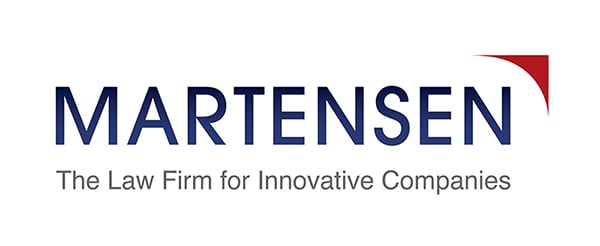Innovation and Working with/for the Government: What, Why, When, and How
Innovation comes in many colors, and as problems and challenges arise, innovations are soon to follow as a solution. Competition, and indeed the capitalistic economic model, thrives on innovation. The innovation landscape is diverse, with both small and large companies playing important roles. Many ecosystems benefit from a mix of small, agile startups and larger, established companies working together or independently to drive innovation with success, often involving a combination of factors, including a supportive organizational culture, access to talent, financial resources, and a strategic vision.
Recognizing the need for innovative solutions to pressing challenges, the government strives to create an environment – like a marketplace – whereby companies of all sizes and shapes can create, develop, and discover the best solutions. Those that get rewarded for their efforts plan, understand what they need to do, why they are doing it, when to take those critical steps, and how to get it done. These steps are even more critical when working with and for the government.
The government works with companies of all sizes and shapes to help it solve its problems and meet its needs. Each year it engages hundreds, if not thousands, of companies to conduct research and development to solve pressing issues. In most cases, the government just wants the right to use the innovation for its own purpose.
At least that’s how it’s supposed to work, and it can work that way if companies have a plan to capture, protect and exploit their innovations. To do so you need to know some basics.
What?
 The government seeks and gains certain rights in technology developed under government contracts. The scope of, and what triggers, those rights vary from agency to agency and contract to contract. To plan on how to leverage rights in an innovation, a company must fully understand what those triggers are and the scope of the rights they are providing to the government. For example, does a company agree to “develop” a set of code for a particular application or merely “validate” that their code can accomplish that which is sought? Knowing what triggers certain governmental rights enables a company to match their interactions with the government with their business strategy. In doing so, they can deliver products and retain a competitive advantage, not only in the government marketplace, but in the commercial sector as well.
The government seeks and gains certain rights in technology developed under government contracts. The scope of, and what triggers, those rights vary from agency to agency and contract to contract. To plan on how to leverage rights in an innovation, a company must fully understand what those triggers are and the scope of the rights they are providing to the government. For example, does a company agree to “develop” a set of code for a particular application or merely “validate” that their code can accomplish that which is sought? Knowing what triggers certain governmental rights enables a company to match their interactions with the government with their business strategy. In doing so, they can deliver products and retain a competitive advantage, not only in the government marketplace, but in the commercial sector as well.
The what is also knowing the rules of play (FAR, DFARS, etc.) and the company’s business plan. One company may provide the government with unlimited rights to gain a prime contract, while another may provide products to the government with restricted or limited rights to preserve its commercial options. Either approach can be a successful strategy, but it requires the company to know the rules that control the government’s rights of use.
Why?
The common thread in almost all emerging companies is the constant battle for controlling and managing cash flow. It’s hard to invest in a contract review or develop a data rights assertion process when you can’t make payroll. Developing and executing an intellectual property (IP) strategy often falls right behind or close to next year’s holiday party budget. But unlike other discretionary expenditures, IP planning, or the lack thereof, is directly tied to long term value. The hard lessons on protecting innovation are realized during due diligence for an acquisition or an Investment round. Investors or a company looking for an acquisition are rarely looking to acquire an innovation, technology, or IP. They are looking to acquire a profitable enterprise. Baked into that value is an implemented strategy to protect innovations thereby enabling a profitable cash flow.
When?
It is heartbreaking to tell a client, “If only we had talked last week.” There are disclosure rules with respect to when an innovation thereafter can and cannot be protected. The harder realization is recognizing when something is ripe for protection. For example, patents protect inventions, not ideas. An invention is a conception tied to either an actual or construction reduction to practice, which triggers an invention that is “ripe” for protection. The same analysis needs to take place for creative works protected by copyrights or processes to be secured as a trade secret.
A process to evaluate whether an innovation exists should be established before it is presented to a third party, including the government. Too often, innovations are included in a proposal or offer without any consideration of whether it has been protected. And it may be entirely plausible that the business plan is to work within the government marketplace to reach the point that an innovation is protectable. But the key to success is being proactive rather than reactive. Innovations are protectable when they’re recognized as such before disclosure.
How?
Failing to plan is a plan for failure, but the planning process is critical. In the world of innovation, it’s important to establish a process by which ideas, concepts, and processes are continually evaluable to determine when they reach the level of an innovation suitable for protection within the established rules and in line with the company’s objectives. The process is iterative, leading to numerous negative conclusions before the results may yield an affirmative response. Once an innovation is recognized, the steps to protect that innovation must exist and followed.
For technology-based companies looking to work with or for the government, protecting innovation and intellectual property is crucial. The Martensen IP team can help by walking you through the process so nothing falls through the cracks. Whether you’re just starting the process or have any questions regarding IP protection, contact us to set up some time to discuss.



